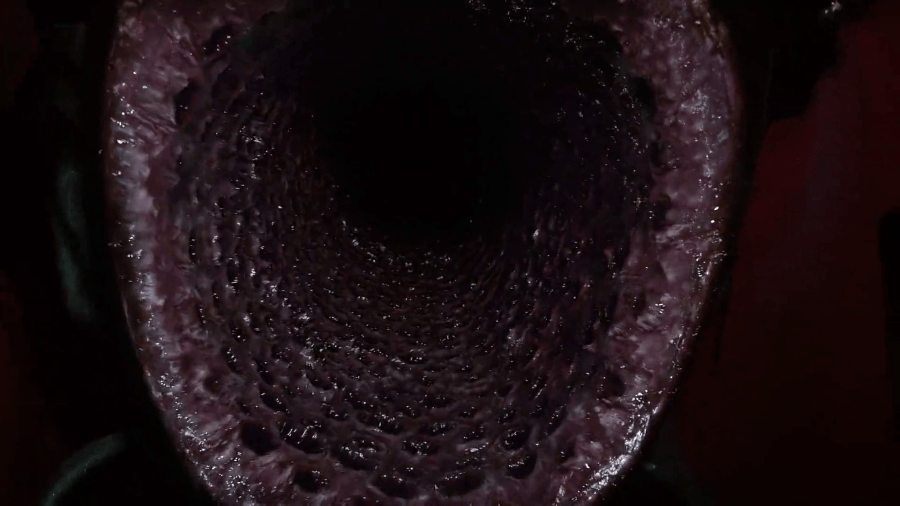In the realm of human emotions and psychological phenomena, few things evoke as much intrigue and unease as the concept of trypophobia. This peculiar fear, characterized by an aversion to clustered holes or patterns, intertwines with the age-old practice of incantation, leading to a fascinating exploration of the mind's dark corners. The term "incantation trypophobia" emerges at the intersection of fear and spirituality, inviting a deeper understanding of how our perceptions shape our experiences.
As we delve into the world of incantation trypophobia, it becomes essential to recognize the relationship between our subconscious fears and the rituals that have existed throughout human history. Incantations, often rooted in ancient traditions, serve as powerful tools meant to invoke change, protection, or healing. However, for those who experience trypophobia, the patterns and imagery associated with such rituals can evoke a visceral response, challenging the very essence of what these practices aim to achieve.
In this article, we will explore the multi-faceted nature of incantation trypophobia, examining its psychological underpinnings, cultural significance, and the ways it manifests in contemporary society. From ancient spells to modern interpretations, the connection between incantations and trypophobia presents a unique lens through which we can better understand our own fears and the rituals we create to confront them.
What is Incantation Trypophobia?
Incantation trypophobia is a term that merges two distinct concepts: incantation and trypophobia. Incantation refers to the verbal formula or charm used in rituals, often aimed at invoking a spiritual force or achieving a specific outcome. On the other hand, trypophobia is the intense discomfort or fear triggered by the sight of irregular patterns or clusters of holes. When these two elements converge, it creates a unique psychological phenomenon that can be both fascinating and unsettling.
How Does Trypophobia Manifest in Individuals?
Trypophobia can manifest in various ways, often leading individuals to experience anxiety, nausea, or even panic attacks upon encountering certain visual stimuli. Symptoms may include:
- Rapid heartbeat
- Sweating
- Itching or crawling sensations on the skin
- Feelings of disgust or dread
For individuals who possess a heightened sensitivity to visual patterns, the combination of incantation and trypophobia can be particularly distressing, leading to a complex interplay of fear and fascination.
What Are the Cultural Implications of Incantation Trypophobia?
The cultural implications of incantation trypophobia are vast and varied. In many societies, incantations have been used for centuries as a means of communication with the divine, healing, or protection. However, the visual representations associated with these practices can inadvertently trigger trypophobic reactions in some individuals. This raises important questions about the intersection of culture, fear, and spirituality.
Can Incantation Trypophobia Impact Spiritual Practices?
For those who practice spiritual rituals, incantation trypophobia can present significant challenges. The fear of certain patterns may hinder an individual's ability to engage fully in rituals that rely on specific visual elements. This can lead to a feeling of isolation or exclusion from communal practices, as well as a sense of internal conflict regarding one's beliefs and fears.
How Can Individuals Cope with Incantation Trypophobia?
Dealing with incantation trypophobia requires a multi-faceted approach that addresses both the psychological and emotional aspects of the condition. Here are some strategies that may help:
- Seek professional help through therapy or counseling.
- Practice mindfulness and grounding techniques to manage anxiety.
- Educate oneself about trypophobia to demystify the fear.
- Gradually expose oneself to images that trigger the fear in a controlled setting.
What Role Do Incantations Play in Addressing Trypophobia?
Interestingly, some individuals find that engaging with incantations can serve as a form of empowerment in confronting their trypophobia. By reclaiming the power of the words and rituals that once evoked fear, they can alter their relationship with these experiences. This transformative process can lead to a greater understanding of both the fear and the spiritual significance behind incantations.
Is There a Connection Between Incantation Trypophobia and Mental Health?
The relationship between incantation trypophobia and mental health is a complex one. Many individuals who experience trypophobia may also face other mental health challenges, such as anxiety disorders or obsessive-compulsive tendencies. Understanding this connection is crucial for developing effective treatment strategies and fostering a supportive environment for those affected.
Conclusion: Embracing the Duality of Incantation Trypophobia
In conclusion, the exploration of incantation trypophobia invites us to confront the intricate layers of human emotion, fear, and spirituality. By understanding the psychological roots of this phenomenon, we can begin to dismantle the barriers created by our fears and embrace the rituals that shape our cultural narratives. Whether through therapy, education, or personal exploration, the journey towards understanding and healing from incantation trypophobia is one that holds the potential for profound transformation.
As we navigate the complexities of our fears and the rituals that accompany them, may we find solace in the shared human experience and the power of understanding.


